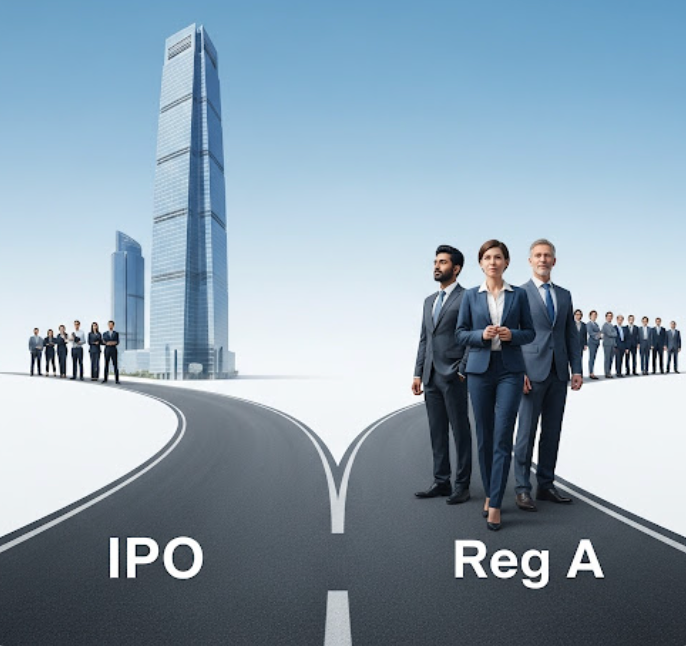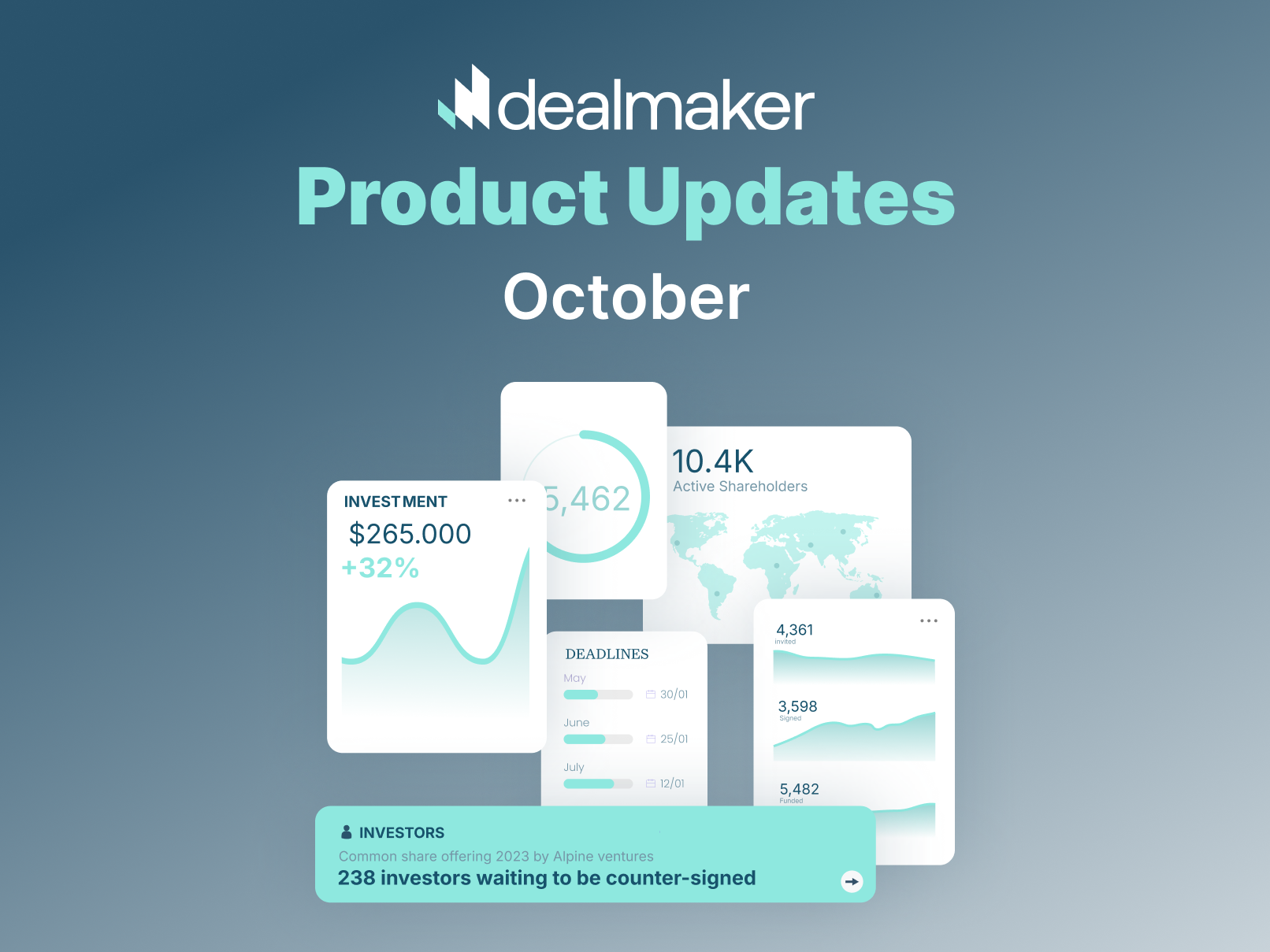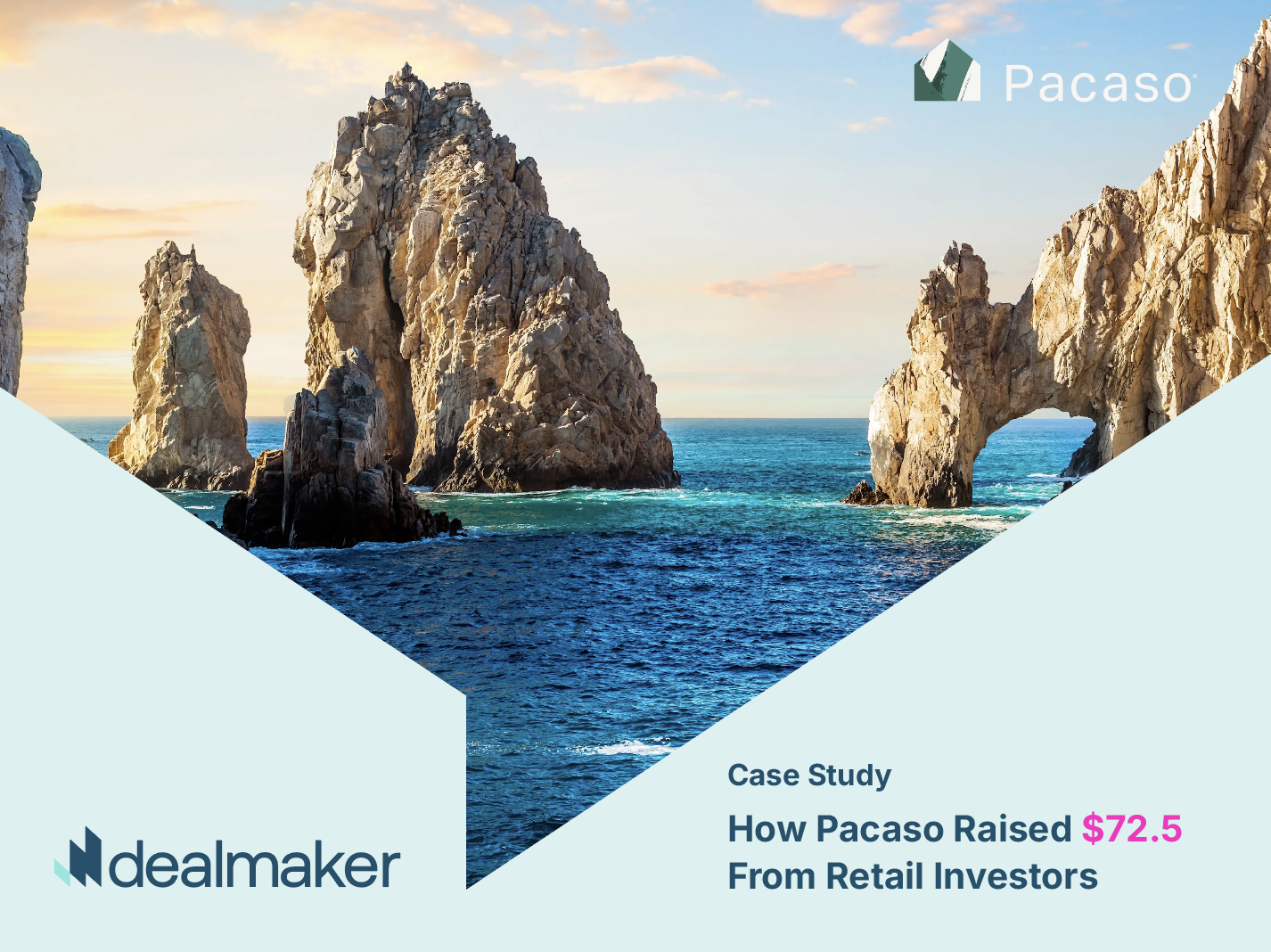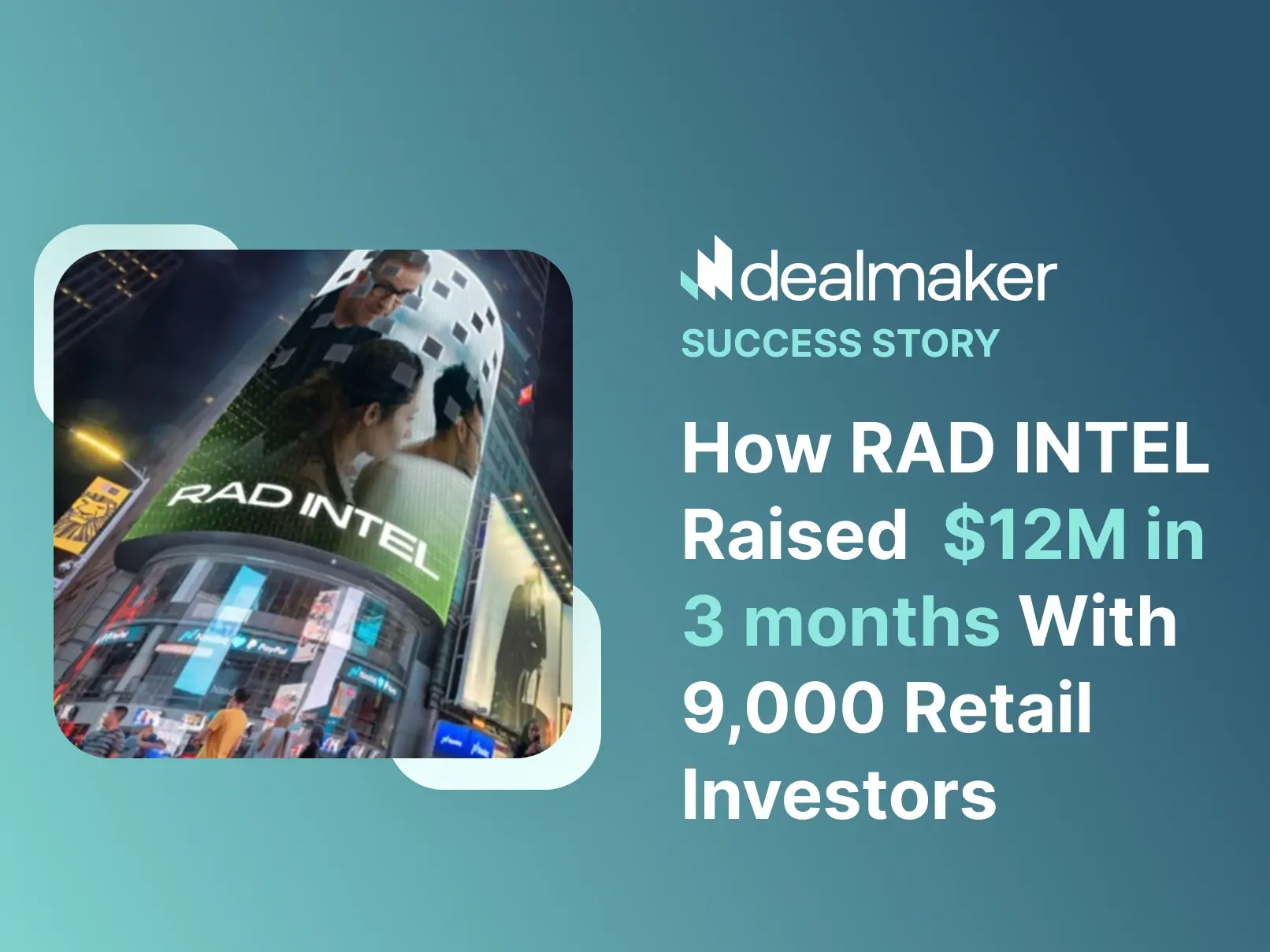Raise Capital
July 24, 2025
Understanding Reg A vs Traditional IPO Cost: Which is Right for You?
Reg A+ vs Traditional IPO Cost: The Real Cost of Going Public
When you're ready to take your company public, the sticker shock can be overwhelming.
Traditional IPOs come with eye-watering price tags, often $5-10 million just to get started. But there's another path that's gaining traction: Regulation A+, which can get you to the public markets for a fraction of the cost.
Both are legitimate securities offerings governed by the SEC. Both can transform your company from private to public. But the similarities end there.
Understanding Your Options
Traditional IPOs remain the gold standard. You file a Form S-1, work with major underwriters, and if all goes well, ring the bell at the NYSE or NASDAQ. It's prestigious. It's proven. And it's incredibly expensive.
Regulation A+ emerged from the JOBS Act as a modern alternative specifically designed for growing companies. Think of it as the "mini-IPO" that lets you raise up to $75 million in a 12-month period with significantly fewer regulatory hurdles.
The key difference? Cost and complexity.
Where traditional IPOs demand armies of lawyers, accountants, and bankers, Reg A+ streamlines the process. Where IPOs restrict you to institutional investors, Reg A+ opens the door to everyone—from your customers to retail investors who believe in your mission.
Let's break down what each path really costs.
The Traditional IPO: Prestige at a Premium
A traditional IPO is the ultimate badge of success in the business world. List on a major exchange, gain instant credibility, and unlock access to deep institutional capital.

But that prestige comes with a hefty price tag.
The Fee Structure That Makes CFOs Sweat
Underwriter fees hit first and hardest: 5-7% of gross proceeds. Raising $100 million? Hand over $5-7 million to your investment bankers. Only mega-IPOs exceeding $1 billion can negotiate down to around 3.5%.
Then come the professional services.
PwC's data shows legal and accounting fees vary wildly based on your complexity, but most companies spend $2-4 million on these services alone. Complex businesses? Even more.
The estimates are as follows:
Don't forget the SEC filing fees that are currently $153.10 per $1 million registered. Small compared to other costs, but every dollar counts.
The Hidden Costs of Going Big
The real shock comes after pricing.
You'll need to completely overhaul your internal infrastructure. Expand your finance team. Hire investor relations professionals. Implement SOX-compliant controls. Build out a legal department capable of handling quarterly reporting requirements.
These ongoing costs? Typically $1-3 million annually.
In fact, 60% of public companies spend over $1 million per year just maintaining their listing. And that's before considering the opportunity cost of executive time spent on quarterly earnings calls instead of growing the business.
The timeline adds another layer of expense. Traditional IPOs take 12-18 months minimum, sometimes longer. Every month of delay means more cash burned on preparations instead of growth.
Regulation A+: The Cost-Effective Alternative
Regulation A+ flips the script on going public.
Introduced under Title IV of the JOBS Act, it was built specifically for companies that want public market access without the traditional IPO's crushing costs and complexity.
With Tier 2, you can raise up to $75 million in a 12-month period, enough for most growth-stage companies. You can issue securities to both retail and institutional investors, dramatically expanding your potential investor base beyond the typical IPO audience.
The Real Numbers
Total cost for a Reg A+ offering? Typically $350,000 to $1 million.
That's not a typo. You can access public markets for roughly the cost of hiring two senior engineers in Silicon Valley.
Here's the breakdown:
- Broker-Dealer Fees: 5-10% of funds raised (success-based) Most firms work on a success fee basis with minimal upfront retainers. You pay when you raise.
- Legal Fees: $50,000-$70,000 This covers preparing your Form 1-A offering statement and navigating SEC requirements. Complex offerings run higher, but nothing like IPO legal bills.
- Accounting and Audit Fees: $25,000-$60,000 You'll need two years of GAAP-compliant audited financials. The audit itself costs $12,000-$30,000 depending on your complexity.
- Marketing Costs: Up to $300,000 Not technically required, but essential for success. This covers everything from your investor website to paid advertising to email campaigns.
The Game-Changing Advantages
Tier 2 offerings come with federal preemption of state Blue Sky laws.
Translation? You can market nationwide without registering in 50 different states, saving hundreds of thousands in state filing fees and legal costs.
You also get "Testing the Waters" privileges. Before filing with the SEC, you can gauge investor interest, refine your messaging, and build momentum. This feature alone can mean the difference between a successful raise and an expensive failure.
For non-accredited investors, there are investment limits (10% of annual income or net worth), but you're still accessing a pool of 230+ million American adults versus the few thousand institutional investors who participate in traditional IPOs.
The Hidden Costs Nobody Talks About
Both paths come with surprises that can blow your budget if you're not prepared.

Regulation A+ Hidden Costs
Testing the Waters Infrastructure Platform fees run about $1,000/month. Add costs for landing pages, compliance reviews, paid media tests, and email automation. Budget $25,000-$50,000 for a professional TTW campaign.
Ongoing Compliance After your raise, you'll file annual reports (Form 1-K), semi-annual reports, and current reports for material events. Budget $50,000-$100,000 annually for ongoing compliance, still far less than traditional public company requirements.
Payment Processing Every investment incurs processing fees (2.5-3.5%). On a $10 million raise, that's $250,000-$350,000 in processing costs. Factor this into your net proceeds calculations.
Traditional IPO Hidden Costs
The Roadshow Two weeks of non-stop travel, private jets, five-star hotels, and elaborate presentations. Cost: $500,000-$1 million.
Market Stabilization Your underwriters may need to support your stock price post-IPO. While they handle this, it effectively costs you through the gross spread.
Executive Distraction Your entire C-suite will be consumed by the IPO process for 12-18 months. The opportunity cost of this distraction is impossible to calculate but very real.
Financial Viability: Know Your Numbers
The Reg A+ Sweet Spot
While you can theoretically raise any amount up to $75 million, financial viability starts around $4 million.
Why? Fixed costs.
Below $4 million, the math gets challenging. Audit fees, legal costs, and platform fees consume too much of your raise. Above this threshold, economies of scale kick in.
Your biggest upfront expense: those two years of audited financials. Budget $25,000-$150,000 depending on your complexity. Start early because this is often your longest lead item.
Timeline Economics
Time is money, especially when you're burning cash.
Regulation A+ offerings typically close in 6-12 months. Traditional IPOs? 12-18 months minimum, often stretching to two years.
Every month matters.
If you're burning $500,000 monthly, six months saved equals $3 million preserved. But the real value is opportunity cost and getting capital six months earlier can fundamentally change your growth trajectory.
Look at EnergyX's success. They raised the maximum $75 million through Reg A+ and used that capital to accelerate their business while competitors were still in IPO preparations.

Success Rates: The Odds You're Playing
Here's what the data tells us:
70% of Reg A+ filings achieve SEC qualification, encouraging odds with proper preparation.
But qualification doesn't equal success. Only 40% of qualified offerings raise more than $1 million.
Before you panic, consider this: Traditional IPOs show similar success rates, with just 42% of newly public companies profitable at listing.
The crucial difference?
A failed IPO burns millions in sunk costs. A failed Reg A+ campaign costs a few hundred thousand, painful, but not fatal.
Building Your Investor Army
Success in Reg A+ hinges on community building.
Unlike IPO roadshows targeting a few dozen institutional investors, Reg A+ lets you market to millions. The companies that win treat this as an opportunity, not a burden.
Average cost per investor acquired: $2,300.
But smart companies drive this down by leveraging their existing communities. Your customers, users, and fans become investors. They're pre-sold on your vision.
The most successful offerings don't just raise capital, they build movements. Investors become brand ambassadors, creating a virtuous cycle of growth and advocacy.
Making the Strategic Choice
Choosing between a traditional IPO and Regulation A+ isn't just about cost, it's about alignment.
Traditional IPOs offer:
- Prestige and institutional validation
- Deep liquidity from day one
- Access to the largest investment funds
- The cache of being "truly public"
Regulation A+ delivers:
- 80-90% cost savings
- 6-12 months faster execution
- Direct investor relationships
- Community-driven growth
- Flexibility to test and iterate
For most growth-stage companies, the economics favor Regulation A+. But success requires embracing its differences, not trying to run a mini-IPO.

The companies that thrive with Reg A+ understand they're not just raising capital—they're building a community of owners who believe in their mission.
Strategic Cost Optimization with DealMaker
The right technology partner can transform your Reg A+ economics.
Modern platforms do more than process payments. They provide integrated solutions that eliminate redundancies and create efficiencies across your entire raise.
Platform Features That Pay for Themselves
Volume-Based Pricing Larger raises unlock better rates. A platform charging 3% on your first million but 1% on amounts over $10 million aligns incentives with your success.
Integrated Marketing Tools Built-in email automation, landing page builders, and investor CRM systems can save $50,000-$100,000 versus hiring agencies.
Compliance Automation Automated KYC/AML, integrated escrow services, and streamlined reporting reduce legal and operational costs while minimizing compliance risk.
AI-Powered Investor Targeting Advanced platforms use machine learning to identify and target likely investors, potentially reducing cost-per-acquisition by 40-60%.
The ROI Calculation
Platform fees feel expensive until you do the math.
A platform charging 2% that doubles your conversion rate from 1% to 2% doesn't cost money, it makes money. Every efficiency improvement compounds across your entire raise.
When evaluating platforms, calculate total cost of ownership:
- Platform fees
- Time savings (valued at your hourly rate)
- Reduced external vendor costs
- Higher conversion rates
- Compliance risk mitigation
The right platform partnership transforms your raise from a costly experiment to a predictable growth engine.
Ready to explore your path to going public? Understanding your specific cost structure—and how to optimize it—is the first step toward a successful raise.
_______________________________________________________________________________________________________________________________________________________________________
Whether you choose the prestige of a traditional IPO or the efficiency of Regulation A+, success comes from understanding the true costs and building a strategy that aligns with your company's goals. The public markets are waiting—choose the path that gets you there on your terms.

Your submission has been received. We will reach out to you via email to schedule a call.
Oops! Something went wrong while submitting the form.





.png)





.webp)
.webp)
.webp)
%20(1).webp)

.webp)